Cherry Blossoms 2010: Kyoto Report (4/10)
by japan-guide.com
This is the official japan-guide.com cherry blossom report for 2010. Please visit also our guide to cherry blossoms for more general information about cherry blossoms and this year's forecasts and our schedule of upcoming reports.
| previous post |
| next post |
2010/04/10 - Kyoto Report
by francois
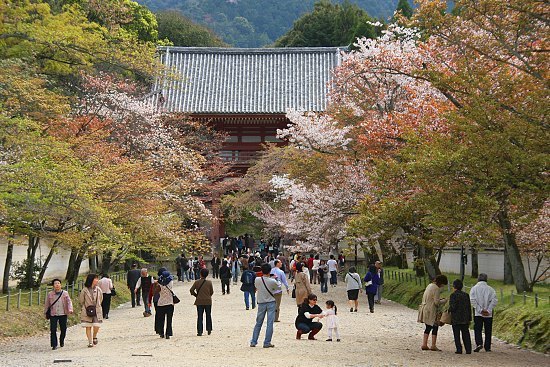
Many spots in Kyoto are now losing their cherry blossoms at an accelerated rate and soon enough the season will be more or less over. When I visited the city three days ago on April 7 some popular cherry blossom spots such as Arashiyama and the Philosopher's Path were starting to lose their petals.
Today I saw many trees that were clearly beyond their peak as well as some that had no flowers at all. Though I was still able to see some trees that were very impressive, over the next few days the cherry blossom season in Kyoto will for the most part be coming to an end.
Daigoji Temple
April 10, 2010 - beyond the peak
In the morning I headed to Daigoji Temple to begin the day's search for cherry blossoms. Daigoji is located in southern Kyoto and consists of quite a large temple complex. There are three paid areas that can be visited individually or all together with a combination ticket.
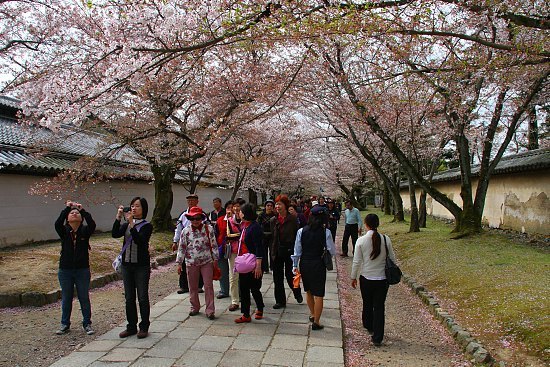
The cherry trees at Daigoji have lost many of their flowers, and the paths that connect the temple's paid areas have much fewer flowers on their branches than they would have had at full bloom.
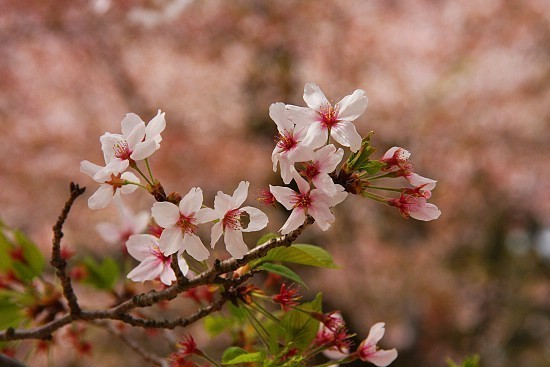
When I visited the temple for last year's April 1, 2009 cherry blossom report I was very impressed with the temple's massive weeping cherry trees. Today, most of those trees that were so full of blossoms last year were well beyond the peak.
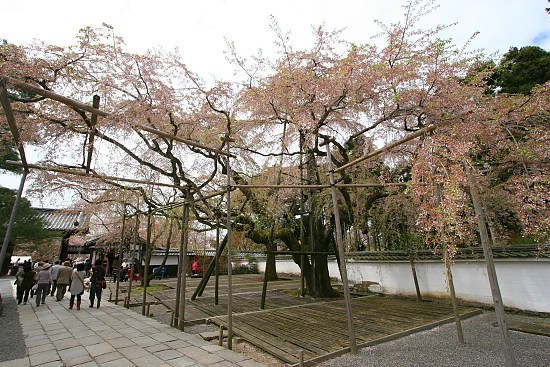
There were a few exceptions at the temple of trees that were still at or around full bloom. The best trees I saw today were a couple of otemari cherry trees that usually are at full bloom in May but have opened earlier this year because of the warm weather. The otemari trees are located in the paid museum area that is to the right of the main entrance to the temple.
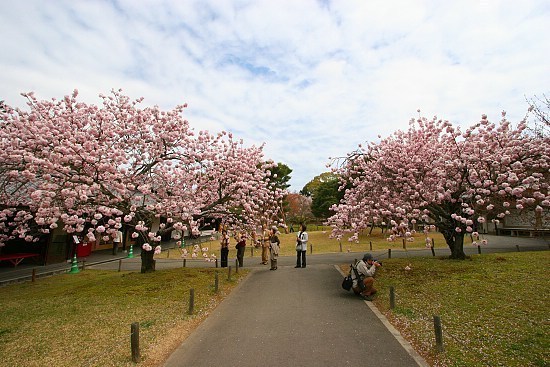
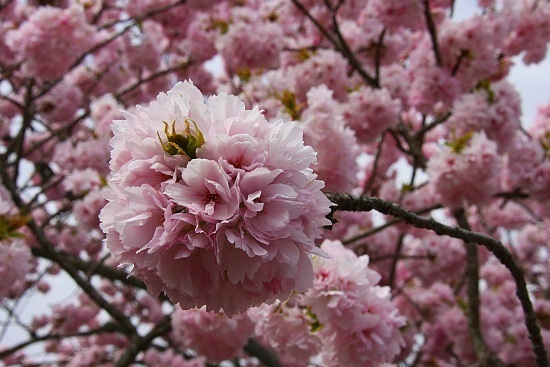
Maruyama Park
April 10, 2010 - petals starting to fall
My next stop was Maruyama Park, one of Kyoto's most popular cherry blossom spots. When Schauwecker visited a week ago on April 4 the famous weeping tree at the center of the park looked spectacular. As can be seen below, today very few flowers remain on the tree.

There were quite a few people at the park today, but I am sure it was not nearly as busy as it was a week ago. Most of the other cherry trees in the park have not fared as badly as the famous weeping tree, but the petals are definitely falling from the trees.
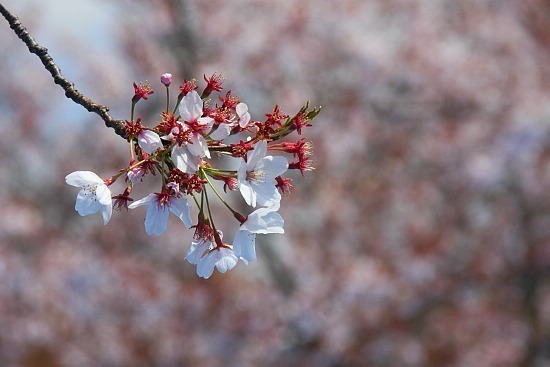
Considering it was a Saturday, both the flowers above and the people below were fewer than I expected.
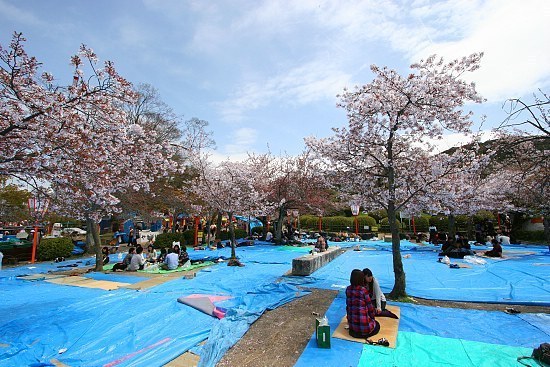
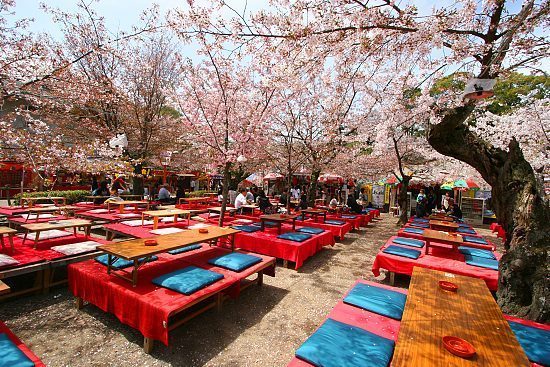
Heian Shrine
April 10, 2010 - full bloom
A bit of a walk to the north took me to a site with much better prospects for good flower viewing. The garden area at the back of Heian Shrine has many weeping cherry trees that bloom a bit later than the somei yoshino variety of tree that are at Maruyama Park. I visited Heian Shrine three days ago on
April 7 and at that time the trees were just approaching full bloom.
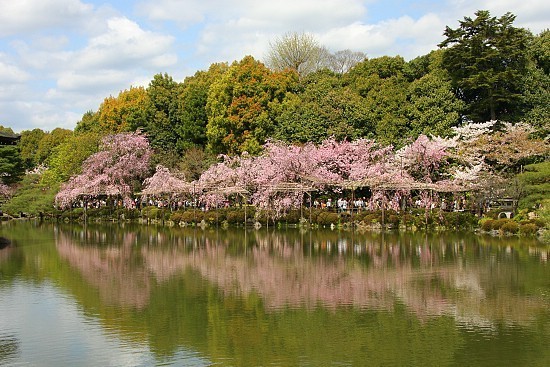
Today the shrine's beni shidare weeping cherry trees were very attractive, and the garden paths were extremely crowd. At the most attractive spots the line of people would bottleneck as everyone stopped to get a shot with their camera or phone.
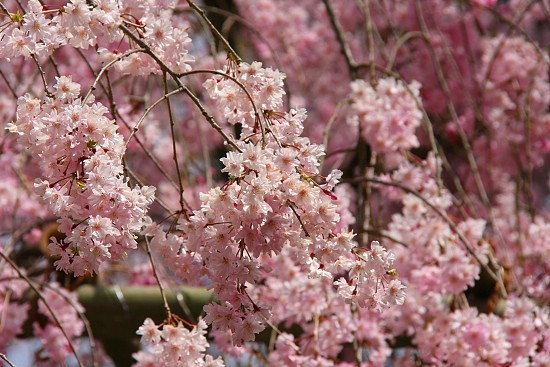
Okazaki Canal
April 10, 2010 - petals starting to fall
From the shrine I headed east along the Okazaki Canal to central Kyoto. Somei yoshino cherry trees line most of the canal on either side, and boat rides along the water are available to visitors.
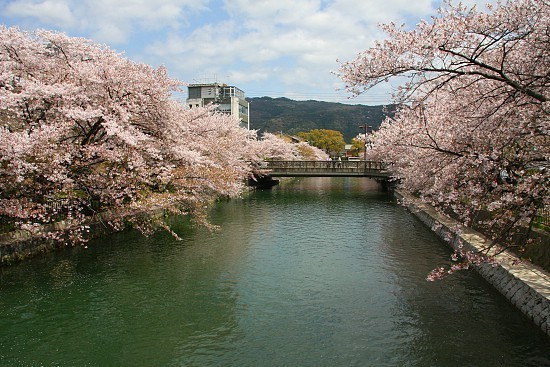
I found the trees along the canal in many spots to still have surprisingly many flowers. The walk or boat ride will still be enjoyable for the next couple of days for people looking for flowers.
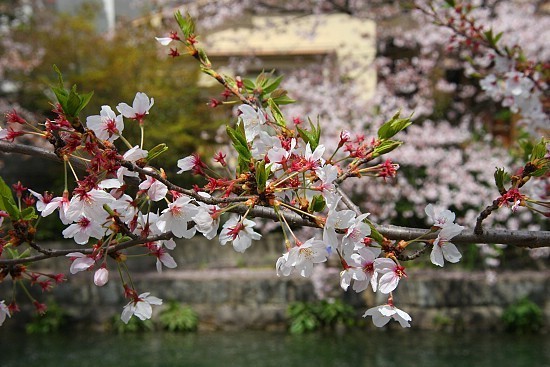
Kyoto Gyoen (Kyoto Imperial Park)
April 10, 2010 - beyond the peak
For the day's final cherry blossom spot I decided to visit Kyoto Gyoen, the large park that surrounds the Kyoto Imperial Palace. At Kyoto Gyoen large gravel pathways make a grid with imperial residences, palaces, sport facilities and parks. There are some cherry trees along the paths, but today only a few of them retained many flowers.
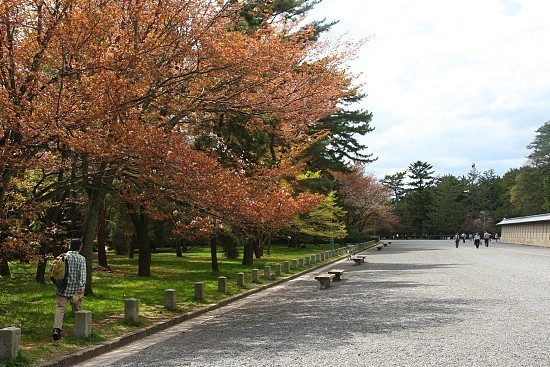
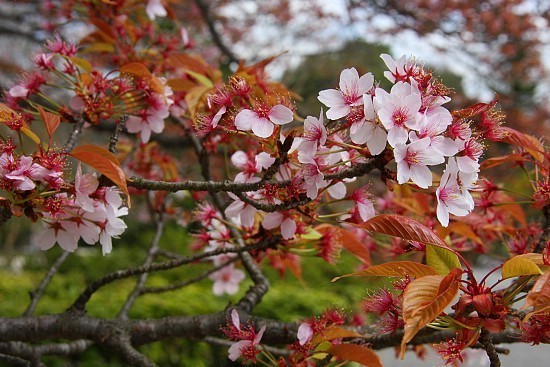
When I reached the area of the actual Imperial Palace I found massive crowds of people. Entry to the Imperial Palace usually requires applying before hand and visitors are taken on guided tours in small groups. However, the Imperial Palace currently has a special spring opening that lasts until tomorrow where people are allowed to walk through the palace grounds at on their own. There is of course a designated route and it is not allowed enter the palace and mess around with the emperor's things. However, the route that is now open passes directly by the Shishinden, the palace's main building, which must be seen from a distance during the regular guided tours. I enjoyed being able to get a close look at the building and the emperor's throne.
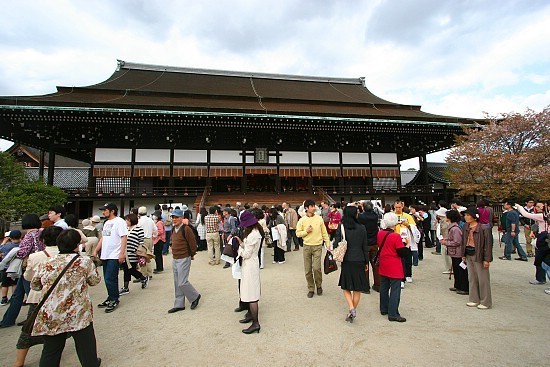
From Schauwecker's report from Kyoto Gyoen exactly two weeks ago on March 27 I saw that there were attractive weeping cherry trees located in the northwestern corner of the park. Though many of the trees had been at full bloom 14 days ago, there are still many at full bloom right at the moment. Directly adjacent are trees that have branches that are covered with almost all leaves and almost all flowers. Once again, it is a great place to find flowers.
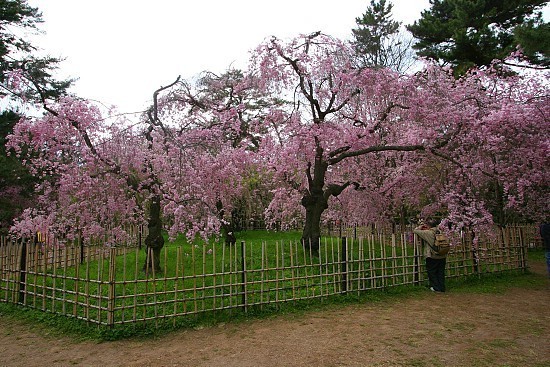
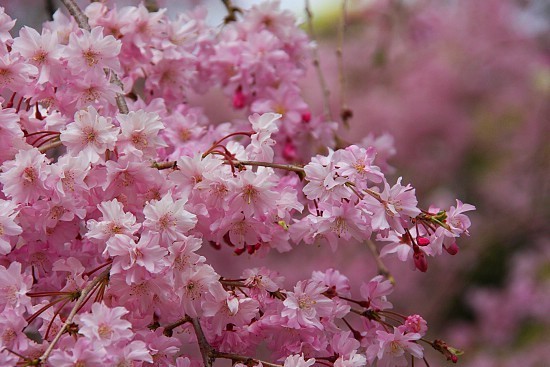
| previous post |
| next post |
|
List of Posts:
2010/05/14 - Hakodate Report 2010/05/13 - Matsumae Report 2010/05/06 - Kakunodate Report 2010/05/05 - Hirosaki Report 2010/04/25 - Takizakura Report 2010/03/30 - Nagoya Report |
Questions? Ask in our forum.


